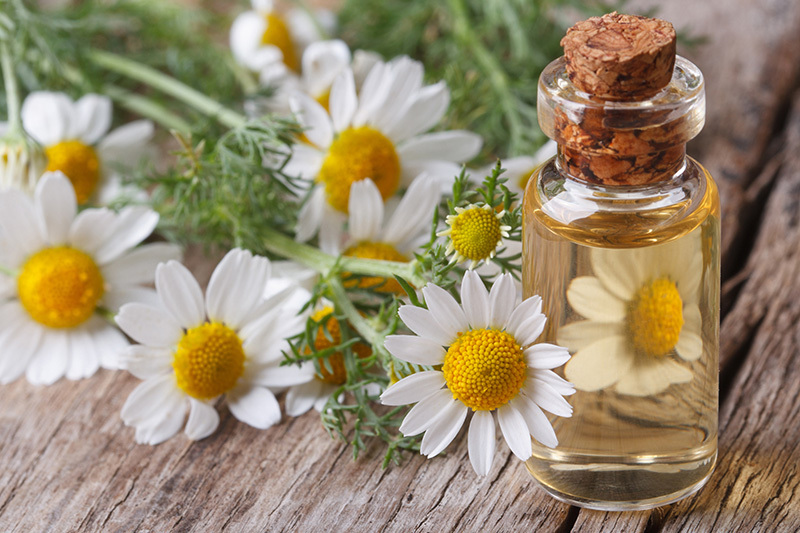Mastering the Art of Hydrangea Maintenance
Posted on 13/08/2025
Mastering the Art of Hydrangea Maintenance: Expert Tips for Healthy, Vibrant Blooms
Hydrangeas are among the most beloved flowering shrubs in gardens worldwide. Their lush, bold blooms and elegant foliage grace landscapes from delicate cottage gardens to grand estates. Mastering hydrangea maintenance ensures endless beauty, captivating colors, and robust plants that thrive for years. In this comprehensive guide, you will discover the secrets to cultivating and maintaining thriving hydrangea plants, so you can enjoy flourishing blooms season after season.
Why Hydrangeas Are a Garden Classic
From their spectacular spherical blossoms in shades of blue, pink, white, and purple to their adaptability and resilience, hydrangeas possess an enduring charm. Whether massed in borders, as hedges, or in decorative pots, these versatile plants quickly become focal points.
- Long Blooming Season: Most hydrangea varieties boast a blooming window from early summer through fall.
- Versatility: Hydrangeas thrive in partial shade, making them ideal for brightening less sunny areas.
- Variety: Species such as Hydrangea macrophylla, paniculata, arborescens, and quercifolia offer different forms, sizes, and colors.
- Soil-Dependent Color Changes: Certain hydrangeas change flower color based on soil pH, allowing for creative gardening.
Understanding Different Hydrangea Species
Before diving into hydrangea care best practices, let's examine the most popular types:
- Bigleaf Hydrangea (Hydrangea macrophylla): Includes mophead and lacecap types. They are famous for their color-changing flowers, responding to soil pH.
- Panicle Hydrangea (Hydrangea paniculata): Known for cone-shaped blooms and excellent cold hardiness.
- Smooth Hydrangea (Hydrangea arborescens): Features round clusters of white flowers, beloved for 'Annabelle' variety.
- Oakleaf Hydrangea (Hydrangea quercifolia): Notable for deeply lobed leaves and striking autumn color.
Each species has unique requirements. Mastering the art of hydrangea maintenance involves tailoring your approach to suit your specific shrub.

Planting Hydrangeas for Long-Term Success
Choosing the Perfect Location
Location is crucial for hydrangea health. The majority of hydrangeas prefer:
- Partial Sun: Morning sun with afternoon shade is ideal, especially in warmer climates.
- Protection from Harsh Elements: Shelter from strong winds and intense midday sun to prevent moisture loss and leaf scorch.
Soil Preparation: The Foundation of Hydrangea Health
For optimal hydrangea growth, well-drained, fertile soil is essential. Add plenty of organic matter such as compost or leaf mold. Ensure pH is appropriate for your desired flower color if growing Bigleaf or Mountain types.
- Blue Flowers: Maintain soil pH between 5.2-5.5 (acidic). Incorporate aluminum sulfate or pine needles.
- Pink Flowers: Keep pH 6.0 and above (alkaline). Use lime to increase pH.
Planting Steps
- Dig a hole twice as wide and as deep as the root ball.
- Amend the native soil if necessary.
- Place the hydrangea in the hole with the root crown level to the ground surface.
- Backfill gently, then water thoroughly.
- Mulch with 2-3 inches of organic material to retain moisture and regulate temperature.
Watering Wisdom: Hydrangeas' Thirst for Consistency
Proper watering is the cornerstone of excellent hydrangea maintenance. These shrubs are not drought tolerant and can quickly wilt without regular moisture.
- Deep and Infrequent: Hydrangeas benefit from deep, thorough waterings to encourage robust root systems. Avoid frequent, shallow watering.
- Early Morning: Water early to reduce evaporation and prevent fungal issues.
- Soaker Hoses: Drip irrigation or soaker hoses deliver water directly to roots, minimizing disease on leaves and blooms.
During extremely hot or dry spells, hydrangeas may need extra hydration. Watch for drooping leaves -- a tell-tale sign of water stress.
Fertilizing Your Hydrangeas for Vigorous Growth
To truly master hydrangea care, understanding fertilization is vital. Too much or too little fertilizer can inhibit flowering, cause leaf burn, or encourage leafy growth at the expense of blooms.
Best Fertilizer Practices
- Timing: Early spring, just before and after leaf emergence, is best. Avoid late-season nitrogen applications, which can reduce winter hardiness.
- Type: Use a balanced, slow-release fertilizer or one formulated for flowering shrubs.
- Frequency: Once in spring and again in midsummer, if needed.
Tip: Excess nitrogen can spur green growth but at the expense of blooms. Always follow package recommendations and do not over-fertilize.
Pruning Hydrangeas: Encouraging Better Blooms
Pruning is an essential part of hydrangea plant care, but each species requires different techniques and timing.
When and How to Prune
- Bigleaf & Oakleaf Hydrangeas: These bloom on old wood. Prune immediately after flowering - typically by late July. Avoid cutting in late fall or early spring, as this removes next year's buds!
- Panicle & Smooth Hydrangeas: These flower on new wood. Prune in late winter or early spring before new growth emerges.
- Deadheading: Regularly remove spent flowers to encourage new blooms and maintain a tidy look.
- Rejuvenation Pruning: Every few years, thin out up to one-third of the oldest stems at the base to promote air circulation and vigorous new growth.
Pro Tip: Always use clean, sharp pruning shears to prevent disease transmission.
Pest and Disease Management in Hydrangea Maintenance
A significant aspect of maintaining lush hydrangeas is safeguarding against common pests and diseases.
Prevention Strategies
- Good Air Circulation: Space plants appropriately and prune to prevent crowded, damp conditions.
- Monitor Regularly: Inspect leaves and stems often for early signs of problems.
Top Hydrangea Pests
- Aphids: Small, green insects that feed on sap. Rinse off with a strong jet of water or use insecticidal soap.
- Spider Mites: Signs include yellow stippling and fine webbing. Increase humidity and apply horticultural oil.
- Scale: Brown, shell-like bumps on stems. Remove manually or apply a systemic insecticide if necessary.
Common Diseases
- Powdery Mildew: White, powdery residue on foliage. Improve air flow and avoid wetting leaves.
- Leaf Spot: Brown or purple spots caused by fungi or bacteria. Remove affected leaves and avoid overhead watering.
- Root Rot: Caused by overly wet soil. Ensure proper drainage and avoid waterlogging roots.
Tip: Healthy, well-maintained hydrangeas are far less susceptible to pest and disease problems.
Seasonal Hydrangea Maintenance Checklist
Spring
- Apply mulch to insulate and enrich soil.
- Begin fertilizing if soil nutrients are low.
- Start supplemental watering as the weather warms.
- Prune, as needed, depending on hydrangea type.
Summer
- Monitor soil moisture closely -- water deeply during droughts.
- Deadhead spent blooms for continued flowering.
- Inspect regularly for pests and diseases.
Autumn
- Reduce fertilization to prepare plants for winter dormancy.
- Leave spent flower heads on for winter interest and frost protection, especially for bigleaf varieties.
- Apply a thicker mulch layer before freeze.
Winter
- Protect susceptible species with burlap wraps or windbreaks in harsh climates.
- Avoid walking on frozen soil near roots to prevent damage.
Advanced Hydrangea Maintenance Tips
Changing Hydrangea Flower Color
Bigleaf hydrangeas are famous for their soil pH-dependent color shifts. Here's how to experiment with their hues:
- To intensify blue, lower the pH with garden sulfur or aluminum sulfate.
- To turn blooms pink, raise the pH with lime.
Note: Changes can take a full season or more and depend on existing soil chemistry and available aluminum.
Container Hydrangea Maintenance
- Choose dwarf varieties for containers due to space constraints.
- Use well-draining potting mix and water consistently.
- Feed regularly as nutrients leach from pots more quickly than garden beds.
- Move pots to sheltered spots in winter for frost protection.
Hydrangeas as Cut Flowers
Hydrangeas last beautifully in vases if cut in the morning when the stems are well hydrated. Immediately plunge cut stems into lukewarm water and recut under water for best longevity.
Common Mistakes to Avoid in Hydrangea Maintenance
- Improper Pruning: Cutting at the wrong time can remove next year's flower buds.
- Over-Watering or Under-Watering: Finding the right balance is key for healthy plants.
- Ignoring Soil Requirements: Insufficient organic matter or improper pH leads to poor performance.
- Neglecting Winter Protection: Failing to shield plants in harsh climates can result in dieback or loss of blooms.
- Dense Planting: Overcrowding impairs air circulation and increases disease risk.

The Rewards of Mastering Hydrangea Maintenance
Hydrangeas, when well cared for, are low-maintenance and highly rewarding. Their dramatic blossoms create stunning displays from early summer into fall, year after year. By understanding their unique needs -- from planting and watering to pruning and protection -- you will master the art of hydrangea maintenance, ensuring your garden is filled with healthy leaves and bountiful blooms.
Whether you are a novice or a seasoned gardener, these hydrangea maintenance tips and techniques will help you create an enviable landscape. Start today, and take pride in nurturing these classic beauties to their fullest potential!
Frequently Asked Questions on Hydrangea Maintenance
- How do I revive a wilted hydrangea? Ensure consistent soil moisture and provide afternoon shade. Deep water immediately, and monitor closely during heat waves.
- Why aren't my hydrangeas blooming? Incorrect pruning, excessive shade, or frost damage to buds are common culprits. Make sure you know your hydrangea species and prune accordingly.
- Can I grow hydrangeas indoors? Hydrangeas can be grown in containers and brought indoors temporarily, but they need a dormant period and plenty of light, making long-term indoor cultivation difficult.
Conclusion: Cultivating Mastery in Hydrangea Care
With patience, observation, and a solid understanding of your specific hydrangea's preferences, mastering hydrangea maintenance is both achievable and deeply rewarding. The keys are regular care, mindful pruning, soil attention, and seasonal protection. As you implement these strategies, your hydrangea plants will reward you with dazzling color and vigour that transforms your garden into a personal haven of beauty.
For more expert gardening tips, remember to bookmark this article and revisit it as your hydrangea care journey blossoms!
Latest Posts
Unveiling the Mystery: Your Birth Flower and Its Meaning
Mastering the Art of Hydrangea Maintenance
Learn How to Keep Your Flowers Fresh: 3 Easy Methods





